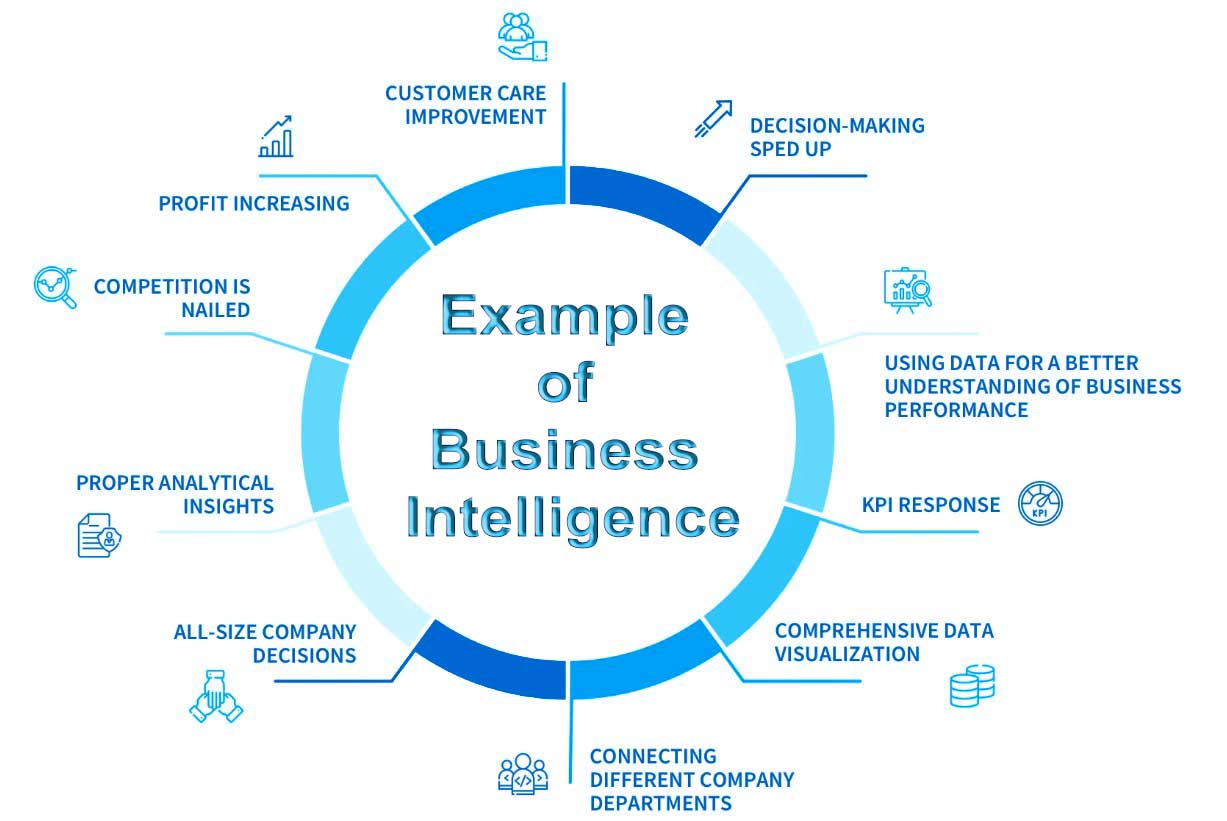Example of Business Intelligence

Business intelligence (BI) is the process of collecting, analyzing, and visualizing data to extract meaningful insights that can be used to improve business performance.
BI can be used to answer a variety of business questions, such as:
BI can be used by businesses of all sizes
What are my best-selling products?
Which customers are most likely to churn?
Where should I open my next store?
How can I improve my marketing campaign?
BI can be used by businesses of all sizes and in all industries. Here are some examples of how BI is used in the real world:
Netflix: Netflix uses BI to recommend movies and TV shows to its users. The company’s BI algorithm takes into account various factors, such as user viewing history, ratings, and reviews.
Amazon: Amazon uses BI to personalize its product recommendations and search results. The company also uses BI to predict customer demand and manage its inventory levels.
Walmart: Walmart uses BI to optimize its supply chain and increase the efficiency of its stores. Companies also use BI to develop new products and services.
More specific examples of how BI is used
Here are some more specific examples of how BI is used in various industries:
Retail: Retailers use BI to track sales performance, identify trends, and optimize their product mix. For example, a retailer might use BI to identify which products are most popular in a particular region or which products are frequently purchased together.
Manufacturing: Manufacturers use BI to monitor production efficiency, identify quality control issues, and optimize their supply chains. For example, a manufacturer might use BI to identify which machines are most susceptible to breakdowns or which suppliers are most likely to deliver goods late.
Healthcare providers use BI
Healthcare: Healthcare providers use BI to track patient outcomes, identify trends, and improve the quality of care. For example, a hospital might use BI to identify patients at risk of developing a particular disease or to identify which treatments are most effective.
Finance: Financial institutions use BI to track market trends, assess risk, and make investment decisions. For example, a bank might use BI to identify customers who are at risk of defaulting on their loans or to identify which stocks are likely to perform well in the future.
These are just a few examples of how BI is used in the real world. BI is a powerful tool that can be used to improve business performance in any industry.
Some additional examples of BI applications
Here are some additional examples of BI applications:
Predictive maintenance: BI can be used to predict when machines and equipment are most likely to fail, so businesses can take preventative action.
Customer segmentation: BI can be used to segment customers into different groups based on their needs and preferences. This information can be used to create more targeted marketing campaigns.
Fraud detection: BI can be used to detect fraudulent transactions and other types of financial fraud.
Risk management
Risk management: BI can be used to identify and assess risks to the business. This information can be used to develop mitigation strategies and reduce the impact of risks.
BI is a versatile tool that can be used for a variety of purposes. By using BI, businesses can make better decisions, increase efficiency, and reduce costs.